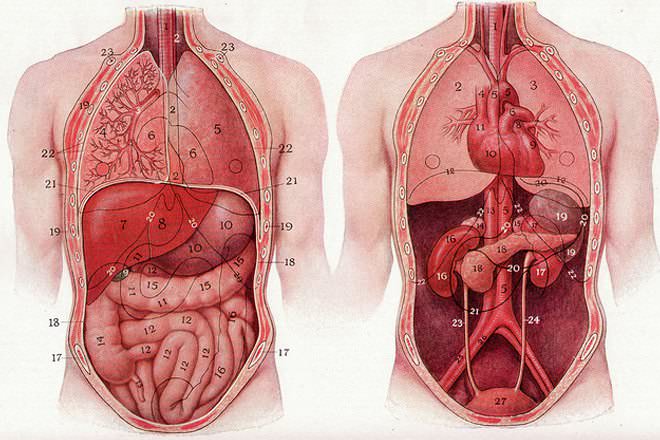What is the difference between abdomen and stomach?
Animals have two major parts in the body which are abdomen and stomach. The location of the abdomen and stomach tend to confuse many people.
The core difference between the abdomen and stomach is that abdomen is the part of the body that contains the chest and pelvic region while the stomach is the part of the body that contains organs for digestion.

What Is an Abdomen?
The abdomen is the part of the body that entails the chest and pelvic region. Some of the common parts are the abdominal cavity, organs, muscles, skin, and fats.
The abdomen is responsible for the digestion and absorption of nutrients. The abdominal muscles help in respiration and breathing.
What is a Stomach?
The stomach is the sack-like structure located between the esophagus and the intestines. It is responsible for facilitating the digestion process in human beings.
It is situated on the left side of the abdominal cavity. It contains gas and connectors with the esophagus and small intestines.
The sphincter is the valve that allows food material to enter the duodenum for absorption and mixing with secretions to enhance further digestion.
Comparison Chart: Abdomen Vs Stomach
| Basic Terms | Abdomen | Stomach |
| Meaning | It is part of the body that comprises of the chest and pelvic region | It is a sac-like structure between the esophagus and intestines |
| Etymology | Originate from a Latin word abdodere | Derived from Greek word stomachus |
| Parts | Digestive tract, Accessory organs of the digestive tract, Urinary system, and other organs. | Cardia, Fundus, Body or Corpus and Pylorus. |
| Components | Stomach, small intestine, large intestine with cecum, appendix, liver, gallbladder, pancreas, kidneys, ureters, and spleen. | Gas, pyloric walls, connectors with the esophagus, the first part of the duodenum |
| Significance | Digestion and absorption of food | Breakdown large food particles to smaller particles |
| Common diseases | Diarrhea, constipation, abdominal swelling, and gastroparesis | Stomach upset and cancer |
| Size | Largest | Smallest |
| Role | Protection of the vital organs | Contain acid for the chemical breakdown of food |
| Muscles | Thicker | Smooth and thin |
| Location | Start at the chest and ends at the pelvic region | Located on the left side of the abdominal cavity |
Core Differences between Abdomen and Stomach
- The abdomen is part of the body that comprises of the chest to the pelvic region while the stomach is the sac-like structure between the esophagus and intestines
- The abdomen is derived from a Latin word abdodere while the stomach is derived from a Greek word stomachus
- Parts of the abdomen are digestive tract, accessory organs of the digestive tract, urinary system, and other organs while the stomach is cardia, fundus, body or corpus, and pylorus.
- The abdomen consists of Stomach, small intestine, large intestine with cecum, appendix, liver, gallbladder, pancreas, kidneys, ureters and spleen while stomach comprises of gas, pyloric walls, connectors with the esophagus, the first part of the duodenum
- The abdomen is responsible for digestion and absorption of food while the stomach is responsible for the breakdown of food particles.
- Common diseases in the abdomen are diarrhea, constipation, and abdominal swellings while stomach are stomach upsets and cancer
- The abdomen is the largest part while the stomach is the small part
- Muscles of the abdomen are rigid and thick while those of the stomach is smooth and thin.
- Abdomen help in the protection of major organs while the stomach facilitates the digestion of food.
- The abdomen starts from the chest to the pelvic region while the stomach is located between the esophagus and intestine.
You May Also Like:
Comparison Video
Summary
The abdomen is the region under the chest separated by strong muscles and pelvic region while the stomach is the sac-like bag that helps in the breakdown of large food particles to smaller ones for easy digestion.